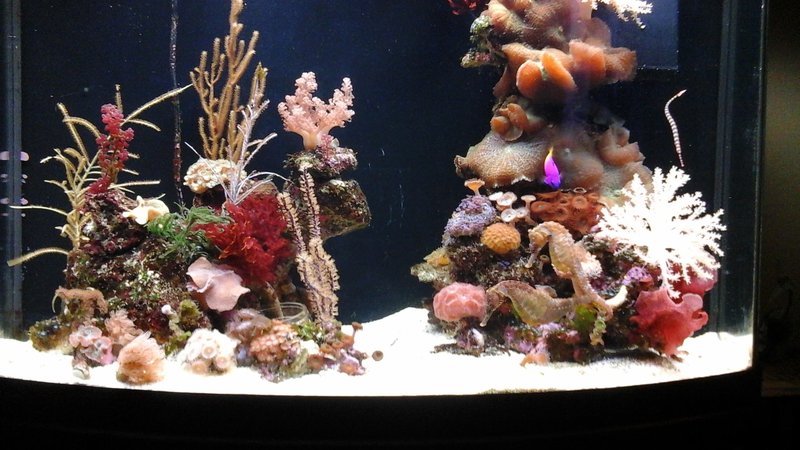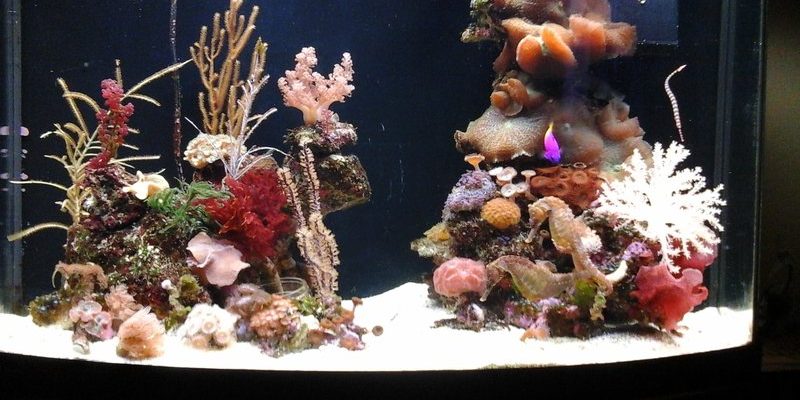
So, let’s dive into this fascinating topic and figure out what your little aquatic friends need to thrive. If you’re the proud owner of a seahorse—or just thinking about getting one—you’ll want to ensure you get everything just right to keep them happy and healthy. I’m excited to share what I’ve learned along the way!
Understanding Seahorse Habitat Needs
Seahorses are fascinating little critters, but they rely heavily on their environment to stay healthy. Unlike many fish, seahorses aren’t built for speed; instead, they prefer calm, stable waters where they can latch onto plants and corals. This preference means that the size of their tank is not just an afterthought—it’s a vital part of their habitat.
Here’s the thing: you want to mimic their natural habitat as closely as possible. Seahorses typically inhabit shallow waters, often around reefs or seagrass beds. So, a larger tank with plenty of room for swimming and hiding places is ideal. A minimum tank size of 30 gallons is generally recommended for one or two seahorses. Larger tanks become essential if you plan to house more or want to provide extra space for them to explore.
The Importance of Tank Size
Imagine living in a cramped apartment—you might feel stressed and perhaps a bit claustrophobic. For seahorses, a larger tank not only provides swimming space but also helps maintain water quality. In smaller tanks, waste can accumulate quickly, leading to harmful conditions. Larger volumes of water dilute toxins and allow for more stable salinity and temperature, giving these creatures a better chance to thrive.
In addition, a well-sized tank allows you to incorporate various habitats, such as rocks, corals, and plants. This setup mirrors their natural environment, providing seahorses with places to hide and feel secure. It’s not just about aesthetics; it’s about creating a safe haven for your new friends.
Salinity Levels: Getting It Just Right
Now, let’s talk about salinity. This is the measure of salt in the water and is crucial for the health of your seahorses. In the wild, seahorses flourish in brackish waters, where the salinity typically ranges from 1.020 to 1.026 specific gravity. Keeping your tank salinity within this range is essential for their osmotic balance.
Honestly, checking salinity might sound a bit tedious, but it’s an important part of tank maintenance. You’ll need a reliable hydrometer or refractometer to measure the salt levels accurately. Changes in salinity can stress your seahorses and lead to health problems, so consistency is key.
How to Maintain Proper Salinity
If you’re new to this, here’s how to maintain proper salinity:
- Start with a quality salt mix designed for marine aquariums.
- Regularly test the salinity with your hydrometer to ensure it remains stable.
- If you need to adjust salinity, do it gradually to avoid shocking your seahorses.
Keeping salinity consistent might seem challenging at first, but with regular testing and adjustments, you’ll get the hang of it!
Temperature Tuning for Seahorse Comfort
You might be wondering, “What about temperature?” Seahorses prefer water temperatures between 72°F to 78°F (22°C to 26°C). This range mimics their natural tropical habitat and ensures their metabolism stays on track. If the water is too cold or too warm, your seahorses could become lethargic or even sick.
Let me explain: temperature fluctuations can stress seahorses, making them susceptible to diseases. Installing a good-quality aquarium heater is a wise investment if you want to provide a comfortable environment. Additionally, using a thermometer to monitor the temperature can help you catch any unexpected changes.
Steps to Maintain Ideal Temperature
Here’s a quick checklist for keeping the temperature just right:
- Use a reliable aquarium heater with a thermostat.
- Regularly check the temperature with a thermometer.
- Avoid placing the tank near windows or heaters that could cause temperature swings.
By paying attention to these details, you’re setting your seahorses up for a happier, healthier life.
Filtration and Water Quality
The quality of the water in your seahorse tank is critical. Seahorses are sensitive to poor water conditions. A good filtration system helps keep the water clean and clear, reducing harmful toxins that can build up. You’ll want a filter that provides gentle water flow, which mimics their natural environment. Too much current can stress them out.
Here’s the thing: regular water changes play a huge role in maintaining water quality, too. Aim for changing about 20% of the water weekly. This practice helps remove waste and toxins, keeping the environment safe for your seahorses.
Choosing the Right Filtration System
When it comes to filters, consider the following:
- Hang-on-back filters: These are great for beginners and are easy to set up.
- Canister filters: A bit more advanced, they provide excellent filtration and can handle larger tanks.
- Sponge filters: These are gentle and ideal for smaller tanks or breeding setups, ensuring low current.
Finding the right filter might take some research, but it’s worth it for your seahorse’s health.
Creating a Natural Habitat
Finally, let’s talk about the fun part—decorating the tank! Adding plants, rocks, and other decorations not only looks great but also makes your seahorses feel at home. Seahorses love to grasp onto things, so including live or artificial plants is vital. Just be sure they’re safe and won’t harm your seahorses.
Here’s what you can include:
- Seagrasses: These provide a natural habitat and hiding spots.
- Corals: Fake corals can serve as a great support for seahorses to latch onto.
- Rocks and Caves: These offer shelter and security, reducing stress.
Let your creativity shine when setting up the tank, but remember that safety is paramount. Rinse any new decorations thoroughly before adding them to the aquarium to remove any chemicals or contaminants.
Setting up a tank for seahorses involves careful consideration of size, salinity, and temperature. By ensuring these elements are just right, you’re not just creating a space; you’re crafting a safe haven for your exotic pets. Seahorses are delicate creatures, and understanding their needs can transform your aquarium into a thriving underwater oasis.
So, whether you’re a seasoned aquarium keeper or a newbie excited to welcome these charming creatures, remember that attention to detail pays off. You’re not only taking care of seahorses; you’re creating a beautiful ecosystem. Happy fish-keeping!

